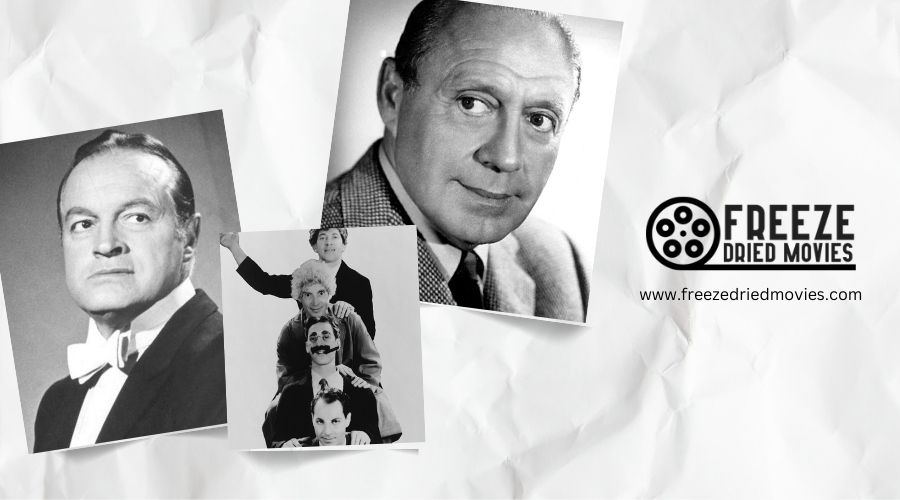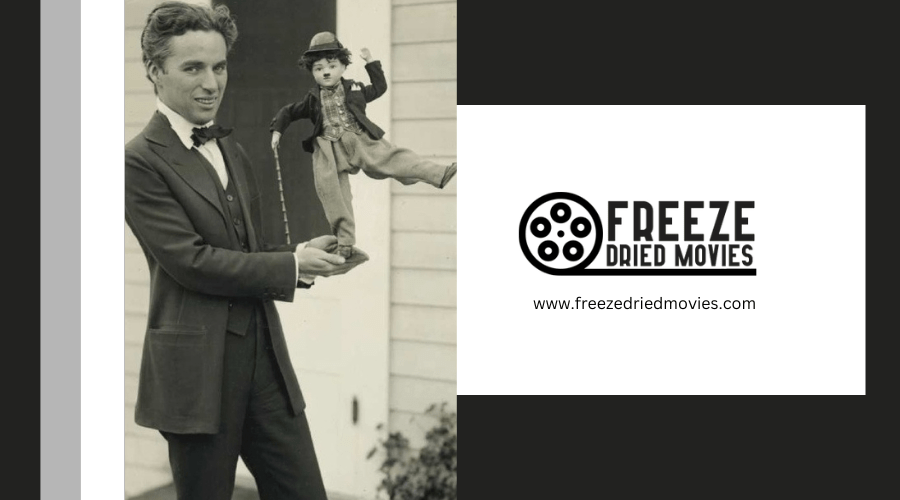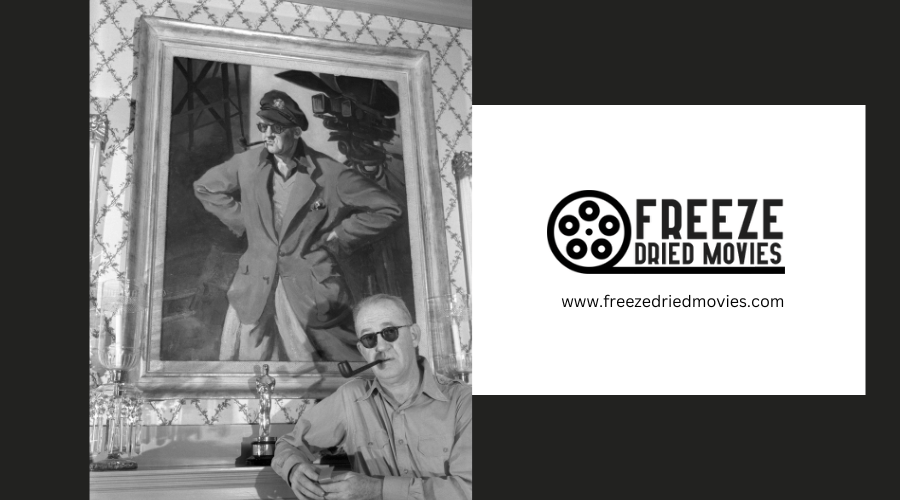Who Were the Famous Comedians of the 1940s?

The 1940s comedy scene featured iconic figures who dominated multiple entertainment forms. You'd recognize Jack Benny for his famous stinginess and perpetual 39-year-old persona, while Abbott and Costello captivated audiences with their "Who's on First?" routine. Bob Hope entertained through films and USO tours, as Laurel and Hardy successfully migrated to talkies. The Marx Brothers, Red Skelton, and Danny Kaye rounded out this golden era of American comedy. Their timeless performances still influence entertainment today.
Key Takeaways
- Abbott and Costello dominated 1940s comedy with their "Who's on First?" routine and horror-comedy films.
- Jack Benny's radio persona as a perpetually 39-year-old miser made him a household name.
- Bob Hope gained popularity through USO tours, radio shows, and films featuring quick-witted stand-up comedy.
- Fred Allen captivated radio audiences with his razor-sharp wit and satirical comedy routines.
- The Marx Brothers, Laurel and Hardy, Red Skelton, and Danny Kaye remained influential comedy stars throughout the decade.

Who Were the Famous Comedians of the 1940S?
Several legendary comedians dominated the entertainment landscape of the 1940s, delighting audiences through radio, film, and early television. Abbott and Costello captivated America with their "Who's on First?" routine, while Bob Hope became a national treasure through his comedy films and USO tours entertaining troops.
The Marx Brothers continued their successful run with classic films produced by Hal Roach studios. Though stars like Richard Pryor, George Carlin, Flip Wilson, and Bob Newhart would emerge later, the 1940s comedy scene belonged to performers like Red Skelton, Jack Benny, and Danny Kaye. Many comedians honed their craft in New York City before reaching Hollywood fame.
While comedy duo Laurel and Hardy were past their prime, they remained influential figures during this golden era of comedy. Their mastery of physical comedy and impeccable timing had established a blueprint for comedy partnerships that would influence generations of performers.
Radio Comedy Kings: Jack Benny, Fred Allen, and Bob Hope
While television would later dominate American entertainment, radio ruled the 1940s airwaves with Jack Benny, Fred Allen, and Bob Hope leading the comedy revolution. These pioneers mastered the art of clean, observational humor that resonated across living rooms nationwide.
Jack Benny's popular radio program featured his infamous stinginess and perpetual 39-year-old persona. Fred Allen captivated audiences with razor-sharp wit and satirical comedy routines that cleverly dissected American culture.
Radio icons Benny and Allen defined 1940s comedy with distinctive personas and witty cultural commentary.
Meanwhile, Bob Hope's quick stand-up comedy style, celebrity guests, and musical numbers made him a versatile entertainer who'd eventually conquer comedy films too.
These radio giants weren't just performers but influential comedy producers who established templates that television sitcoms would later adopt. Their family-friendly approach created a lasting legacy that transformed American entertainment for generations to come.
Before television entered its Golden Age of Television in the 1950s, radio comedy set the foundation for what would become award-winning dramatic and comedic programming.
The Slapstick Legacy of Abbott and Costello
These pioneering figures of stand-up comedy left an indelible mark through:
- Masterful slapstick comedy that combined physical pratfalls with sophisticated verbal confusion
- Wildly popular films like "Abbott and Costello Meet Frankenstein" that showcased their versatile talents
- A performance style that influenced generations of comedians despite their popularity decline in the 1950s
You can still see their influence in comedy today, demonstrating how truly revolutionary their approach was. Their unique comedic synergy transformed encounters with classic monsters into hilarious moments that helped establish the horror-comedy genre.

Laurel and Hardy's Transition From Silent Films to Talkies
Stan Laurel and Oliver Hardy's evolution from silent film stars to talking picture icons marks one of comedy's most successful adaptations to changing technology. Their feature films of the 1930s and 1940s showcased how these stand-up comedians mastered the art of verbal timing alongside their physical comedy.
After their brief appearance in The Hollywood Revue of 1929, Laurel and Hardy became known for seamlessly integrating dialogue into their established comedy act. Later classics like Sons of the Desert, Babes in Toyland, and Way Out West demonstrated their versatility in the new era of motion pictures.
Unlike many silent stars who struggled with sound, this duo thrived in show business by expanding their repertoire beyond live performances. Their success in talkies guaranteed they'd connect with audiences for generations, rarely needing comedy clubs as intermediaries for their timeless humor. While contemporaries like Charlie Chaplin initially resisted the shift to dialogue out of concern it would dilute his unique comedic style, Laurel and Hardy embraced the transition fully.
Comedy on the Big Screen: Top Humorous Films of the 1940s
Cinema during the 1940s witnessed a golden age of comedy that captivated audiences seeking escapism from wartime anxieties. The American comedy scene flourished as the art form gave birth to classics that would become popular years later via television.
You'd find Errol Flynn stepping away from swashbuckling to solve murders in "Footsteps in the Dark" (1941), while Red Skelton brought his high school humor to "The Fuller Brush Man" (1948).
- Abbott and Costello's monster meeting in "Abbott and Costello Meet Frankenstein" (1948) blended horror with laughs
- "The Doughgirls" (1944) tackled front security concerns through the lens of wartime housing shortages
- Laurel and Hardy continued their legacy in "Dancing Masters" (1943), maintaining the spirit of the Little Rascals era



